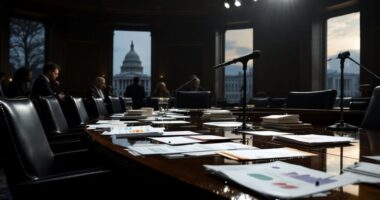In a move that sent shockwaves through the cryptocurrency world, former President Donald Trump signed a sweeping executive order on March 7, 2025, establishing America’s first Strategic Bitcoin Reserve and effectively declaring the United States’ intention to become the global leader in digital assets.
The executive order created what some are calling a “digital Fort Knox,” capitalizing the Strategic Bitcoin Reserve with approximately 200,000 BTC (valued at $17.5 billion) sourced entirely from asset forfeitures. This innovative approach guarantees no taxpayer funds are required while positioning the U.S. as a major institutional holder of bitcoin. The initial announcement notably excluded Bitcoin and Ethereum, causing temporary market confusion before Trump clarified their inclusion via Truth Social.
Meanwhile, the Trump family’s personal ventures into cryptocurrency have raised eyebrows across Washington. The launch of World Liberty Financial, the creation of $TRUMP memecoin, and similar ventures by his children have led to concerns about potential conflicts of interest and insider trading allegations.
The regulatory landscape has shifted dramatically under the order, with the SEC pausing its case against Binance and reconsidering enforcement actions against Coinbase. The nomination of crypto-friendly Paul Atkins as SEC head signals a clear pivot toward innovation-friendly policies. Congressional support remains crucial as the proposal requires legislative approval for federal management of the reserve. Global markets are closely monitoring these developments as regulatory frameworks continue to evolve across jurisdictions.
European officials have expressed concern about America’s aggressive move into cryptocurrency leadership, particularly the ban on creating a U.S. Central Bank Digital Currency. This decision stands in stark contrast to the Eurozone’s ongoing CBDC developments.
The market response was immediate and dramatic, with Bitcoin surging 10% to $94,000 before settling at $87,000. Other cryptocurrencies followed suit, with XRP and Solana posting gains of 32% and 26% respectively.
The crypto industry largely welcomed the executive order, though environmental advocates raised concerns about increased mining activity.
The establishment of the U.S. Digital Asset Stockpile, designed to manage non-bitcoin digital assets from forfeitures, represents another significant shift in government cryptocurrency management. While the initiative has garnered bipartisan interest, Democrats have voiced concerns about potential favoritism and economic risks, setting the stage for intense legislative debates about America’s crypto future.









